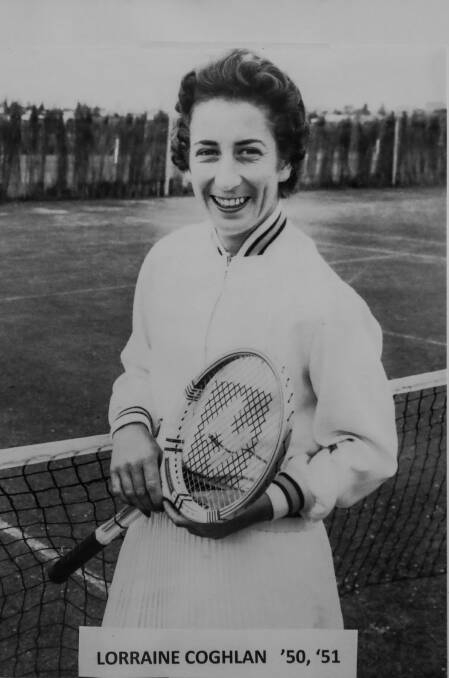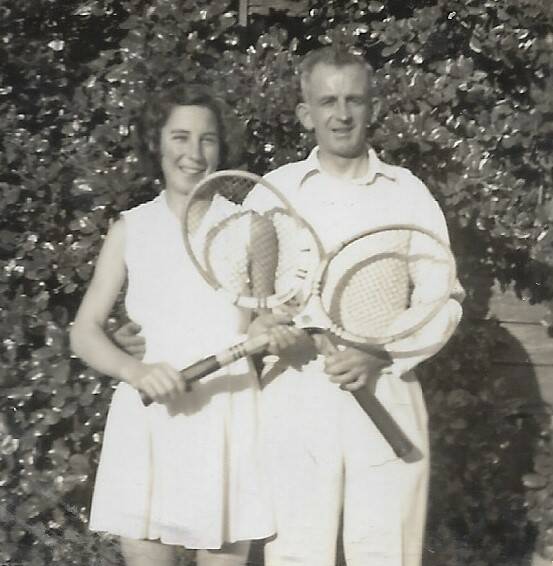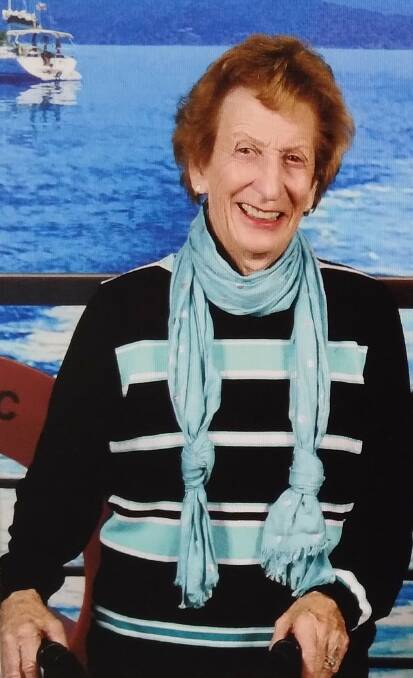
THE FIRST Australian woman to win a Wimbledon title was born in Warrnambool and to this day still has a love for the sport that propelled her into a successful international career.
Subscribe now for unlimited access.
$0/
(min cost $0)
or signup to continue reading
In front of more than 10,000 people at the All England Lawn Tennis and Croquet Club in 1958, Lorraine Coghlan and Robert (Bob) Howe won Wimbledon's mixed doubles title.
Coghlan's daughter, Anne Maree Buttner, published the book From Warrnambool to Wimbledon and Beyond: The Lorraine Coghlan Story, in 2021, documenting her mother's career and life.
"As she walked onto the centre court for the finals, mum's normally cool temperament was being sorely tested," an excerpt from the book reads.
"It was her first experience playing on Wimbledon's centre court; the grand stadium usually reserved for British and top international players for all matches leading up to the finals.
"The more than 10,000-strong crowd was sufficient to rattle the most seasoned of competitors, without the added stress of royalty in the house; Princess Alexandra and her mother, the Duchess of Kent were sitting in the royal box.
"And then there was the small matter of the possibility of a Wimbledon title, potentially the first for an Australian woman."
To everyone's surprise, (Althea) Gibson lost her serve to give Mum and Bob the set. They were Wimbledon champions!
- Anne Maree Buttner
She felt pressured at the importance of the result for Australian women's tennis.
"In the first point of her first service game, she took Bob's advice, aimed for the centre line and double faulted," Ms Buttner said.
"She turned to Bob stating 'I'm just going to focus on getting my first serve in'.
"The strategy worked - mum relaxing and finding the consistent form she was renowned for."
The pair won the first set 6-3, and with no tie-breakers, in the second set it was 12-all.
"The crowd was eerily quiet, no-one was uttering a sound," Ms Buttner said.
"It was a complete contrast to the unruly Italian spectators of a few weeks earlier.
"To everyone's surprise, (Althea) Gibson lost her serve to give Mum and Bob the set. They were Wimbledon champions!"

Coghlan grew up with her extended family at the back of her grandfather's Timor Street paint shop.
When she was 10, she watched her father and older sister, Val, play tennis - it was then she fell in love with the sport. She preferred the tennis court to the beach.
Aged 12, she travelled to Melbourne to play in a country week tournament where her talent was noticed by Australian tennis player and coach Harry Hopman, who recommended she move to the city to be coached.
"Until then she had only been taught by her father who never had a lesson himself," Ms Buttner said. "At the time there were no tennis coaches readily available in Warrnambool."
She went on to play and win age group and state tournaments and in her first year competing in the opens - 1957 - she became Australia's number one ranked women's tennis player.
It was in 1958 she began her international career, winning singles at Spanish, German, Swiss and Belgium opens and was runner-up in the Italian singles and French mixed doubles.
Her career at a professional level ended the following year when she married John Robinson in 1959 and she had three daughters.
IN OTHER NEWS:
- Landlord left with a costly damage bill after tenant destroys home then disappears
- Lyndoch Living fails aged care standards, senior staff member resigns
- South Rovers captain says Lions are looking inwards in a bid to clinch finals berth
- Mayor says locals returning from Bali to take precautions amid foot-and-mouth outbreak
- Campaign launched to help address increasing amount of bottles thrown overboard
Ms Buttner said her mother's off-court life was full of highs and lows.
"Her most remarkable feature is her determination and resilience in coping with tragedy while retaining a very positive attitude and love of life," she said.
"She had the death of her fourth child, son John Andrew, from leukaemia at the age of four and her husband died from a brain tumour when he was 51 and mum was just 44."
John was in hospital for the last six months of his life with Coghlan by his side while their four children (aged between eight and 21) were at home (their fifth child, a son, was born after the death of the fourth child).
Two of the children developed severe eye conditions which led to them being legally blind.
Coghlan remarried in 1990, aged 53, and is still married to her husband to this day.
The family moved to Queensland in the mid-1990s.
"She took up golf and became a very good golfer - she played off a handicap of eight, and spent about five times a week on the golf course for 20 years," Ms Buttner said.
At age 70 she developed a muscular dystrophy condition, which meant she could no longer play golf.
"She uses a walker and will eventually be confined to a wheelchair," Ms Buttner said.
Ms Buttner said tennis still played a big part in Coghlan's life, which included playing, coaching and being a state selector.
"She still watches all the Wimbledon and other tournaments matches, staying up until the early hours of the morning watching," she said.
"She makes comments as she watches the matches providing advice as if she were coaching them."
Warrnambool resident Bill Mountjoy, 92, remembers playing alongside Coghlan at Warrnambool Lawn Tennis Club in the 1940s.
"It was the sort of thing like Ash Barty when she was on her way up," he said.

Coghlan said in the amateur years people played tennis for the love of the game.
"Absolutely no money was received and it was very costly to play," she said.
"You needed either wealthy parents or sponsorship to assist with travel costs and needed to work while also finding time to train.
"It was incredibly social at the time - all tournaments were mixed tournaments not just the grand slam tournaments which is the current situation."
Coghlan said back then all the tennis players were friends, socialising at night together.
Some 70 years later she still remains friends with her tennis family.
Other changes Coghlan has witnessed include the support crews tennis players now have - she said back then the player was on their own.
The use of wooden rackets has gone, with the material now used creating more power.
Back then she said women's tennis was not as prominent as men's and women were patronised - especially for what they wore - and overseas opportunities were limited.
"Often (women) had to continue playing in poor weather when men's matches were postponed - this was particularly the case in Australia," Coghlan said.


